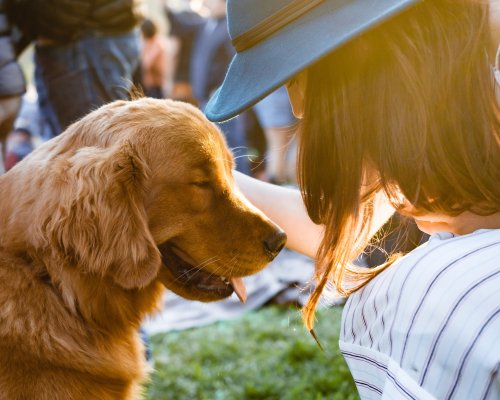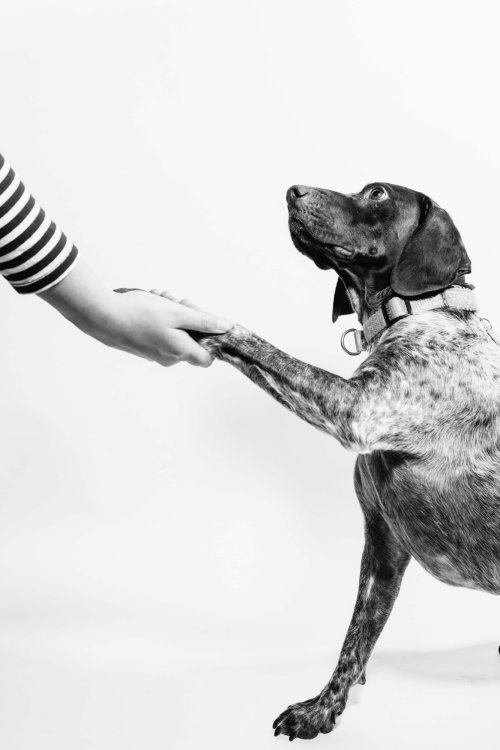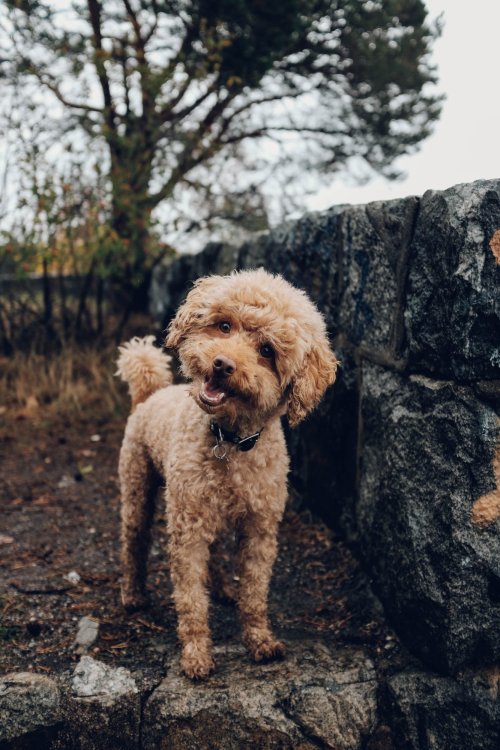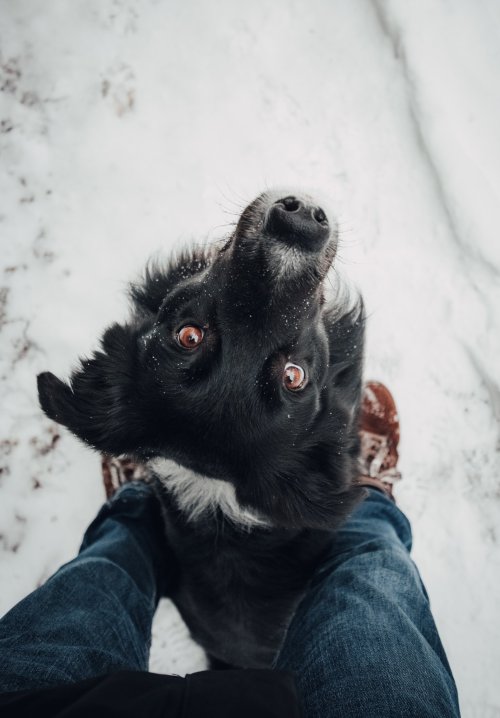Gaining Consent; is it ok to pat your dog?
Our love for dogs often causes absolute delight when we meet a cute puppy or fluffy dog whilst out and about. For some, just seeing a dog elicits a strong and immediate desire to feel its fur against our skin. However, we should first consider - do I have the dog’s consent to approach and pet it.

Do You Know How to Approach a Dog?
Although we generally consider it rude and unreasonable to touch or be touched by every person we meet on the street; often, this same principle is thrown out the window when it comes to dogs. Regular invasions of a dog's personal space can lead to emotional dysfunction, thus, these intrusions should be better understood and prevented. Handlers that are more aware of and respect their dog’s safety bubble needs (the area around them that helps them to feel safe) may be on the path to forming and maintaining a deeper secure attachment bond with their dog, as the dog grows to trust that the owner will protect them.
The connection shared between an owner, and their dog is exceptional; perhaps that is one of the reasons people are so drawn to dogs – seeing their joyful faces trotting along happily with their trusted humans. Mistaking that joy as an open invitation to approach the dog is often well-intentioned, but generally, it does not serve the interests of the dog or its handler.
Contrary to the belief that all dogs like to be patted, many are not exceptionally social, and some do not tolerate or enjoy petting, especially from a stranger. A dog should be approached with respect for its wishes and emotions, just as any reasonable person would approach another person and observe their response.

Puppies ‘Oh so adorable’
There is no doubt about it, puppies are cute! The sweet innocent, fluffy bundle of wiggles and tumbles certainly brings joy to all those that have the pleasure of observing or interacting with them. Many people are overcome with such emotion and desire to nurture, pat, or play with the puppy, that they forget their manners and empathy.
As friendly as they may be, puppies can quickly become emotionally and physically overwhelmed. New people staring at them, reaching out to touch them or calling to them – it may seem that there is no escape, as they are forced to endure the consequences of our own lack of self-control.
We can still interact and play with puppies. First, however, we need to take a moment to gather ourselves as we revel in the delight of their presence. Once we’ve realised that our gaze has been fixed on them for too long, we should step back, giving them space to be themselves. Then we can make a few changes to how we behave, creating a safer environment for the dog; we will cover these steps in this article!

A Common Mistake: I’m Good With Dogs
People who have had repeated positive interactions with dogs may fall into the trap of believing they are naturally gifted to communicate with pets, even a strange dog they have never met. These people may inadvertently assume a dog, who otherwise doesn’t like being touched by strangers, will love being petted by a “dog person” such as themselves.
Some dogs do revel in human attention, actively seeking out caressing and scratching, especially in those hard-to-reach places like their neck or back. Dogs like this, who can't get enough of human touch, can be very expressive in showing their delight and may demand more petting.
However, some dogs prefer not to be touched in certain places, by certain people or do not enjoy touch at all. Dogs who are in pain, will be especially sensitive to touch – so much so they may turn to bite the hand that approaches. Learning to identify pain in your own dog is an essential skill, and this is one reason we should avoid petting strange dogs; we do not know the dog’s personal preferences or if they are in pain.
Learning how to recognise the body language of dogs can help us to understand them better, however, dogs that are trained through compulsion or forced to comply may suppress their behaviour and early signals of discomfort. This makes reading the dog a difficult and dangerous task.
The fact that the dog doesn't growl, bark or walk away to avoid touch does not necessarily mean that it enjoys it. Understanding canine body language is important to keep us safe, but we must also actively seek consent from the handler and dog before touching them.

Respecting Dog’s Emotions
Scientific researchers have studied the range of emotions that are observed through a dog's body language. One of the most famous works in that field is done by Stanley Coren, PhD, psychologist and author of How Dogs Think. Based on these studies, Coren claims that dogs have emotions but are of a limited range. He concludes that dogs feel emotions similar to toddlers lacking more complex feelings like contempt, guilt, pride, and shame. Regardless of the range of emotions dogs perceive, they certainly experience emotions. Owners can help dogs regulate those emotions by being aware of the dog’s needs. Emotional regulation is a self-disciplined process where the dog moderates its emotional response to the environment to be socially acceptable.
Although the complexity of emotions and their own emotional intelligence may not equal that of an adult (many might even joke or argue that their dog has a greater ability than some humans – perhaps they are not wrong?!), this doesn't mean that dogs lack emotional regulation skills. Considering the previous thesis: just because the dog did not move away from a touch doesn't imply it enjoyed it. What might have happened—in case the dog didn't want to be touched but endured it—a dog that has learned to regulate its emotions may ignore the petting.
We can teach dogs to accept touch through emotional regulation, and we can train dogs to be touched out of fear of repercussions. However, petting a dog is far more rewarding when it is enjoyed mutually by humans and canines. This leads us to the importance of communication, observation and ensuring we have the dogs' consent.
How to Communicate with Dogs?
Although they can sometimes be very vocal, most dogs communicate more subtly through body language. More obvious signs that most dog owners and lovers will surely be able to identify is the difference between a happy tail wagging in circles like a helicopter and a tail tucked between the hind legs showing signs of submission and fear. They may also know the difference between relaxed forward-facing ears expressing interest and those showing anxiety and caution (turned or pinned backward). Our dogs show their emotions in these and many other ways, which we wrote about in the article A Guide to Canine Emotional Regulation.
By observing the subtle signs of body language, we can better understand how the dog feels before and during our petting.

Allowing the Room for a Choice
Choice and compulsion don’t go together; since compulsion forces compliance, the ability to choose an option is removed. This is a distinct difference between the Authoritative and Authoritarian models. The former provides safe boundaries, where the dog is allowed to make a choice and good choices are reinforced; the latter dictates what choice the dog needs to make and seeks to enforce that choice.
During physical contact, we want the dog we interact with to know that it is perfectly fine for them to "say" no. Allowing dogs to move away will enable them to build their confidence at their own pace. For dogs that are hypersensitive to the presence of someone in their space, we at Canine Body Balance teach somatic relaxation exercises that help to regulate and calm the dog's nervous system.
Removing the dog’s ability to move away, for instance, if they are on a short leash, cornered, or contained in a crate - demonstrates to the dog that we hold little respect for their will and forces a choice upon them. Repeated exposure to this may affect forming of a secure attachment bond between the dog and their handler; these dogs may also develop emotional dysfunction issues such as anxiety.
How a dog says “no” can come in many forms. Signs such as not responding to an invitation to come closer, looking away, turning the head away, or turning the body indicate that the dog is not currently in the mood for a physical interaction with us. Some dogs are innately subtle in their communication or are challenging to read; if you want to improve how your dog communicates its wishes more clearly, then begin with our article on Cooperative Care Behaviours where we talk more about this topic.

Steps to Pet a Dog
Firstly, we must recognise and allow the possibility that the dog may reject our offer of petting. As crushing as that may be to some, we must not take it personally but rather be happy that the dog can communicate its wishes clearly. Whether it’s your pet or a dog you just met, the most crucial part is to ask for permission.
Ask the Owner
If you want to pet a dog that isn't yours, get permission from the owner or handler. Likely, the owner will already know if their pet likes to interact with strangers in this way and can advise you on if the dog would not enjoy your touch and where they would like it. If the owner does not tell you where their dog wants to be petted, go ahead and ask them, you’ll gain more satisfaction from a dog that loves your attention than one that’s simply putting up with it. Most dogs do not like to be touched on the top of their head or near their limbs – so avoid the common mistake of reaching over their face; instead, stick to the side of their body on the shoulder if you’re unsure.

Ask the Dog
After the owner has permitted you to touch their dog, or if it's your dog, we come to the more important step—ask the dog if it wants to be touched.
Observe their body language; in most cases, you will be able to recognise very quickly if the dog is interested in you. Let the dog approach you without too much encouragement. Are they happy to move into your space, or do they stand still? Perhaps they have turned away to avoid your touch or presence.
Start the petting consent test by crouching down and inviting the dog to come closer to you. If it refuses or shows some negative emotion (nervousness, fear), respect that and don't force the dog to change its mind by coming closer.
If, on the other hand, the dog is interested in interacting with you and decides to approach you, still be aware of its body language—the dog may want to sniff you first before making room for a consensual petting and even show you the area of their body where they like to be petted. Observe the dog's reaction and behave according to its silent permission.
Signs the Dog Enjoys or Doesn’t Enjoy Being Touched
Once you begin interacting with the dog, continue to observe its behaviour and look for signs that the dog is still enjoying the petting or if they have filled their pats bucket and are ready to stop. Each time you touch a new body part, observe whether you still have the dog’s consent and that they both allow and enjoy the touch.
Here are some signs that a dog enjoys being touched:
they initiated the interaction themselves by approaching and entering your space
they pressed their body against you
they brought your hand closer with their paw
they put their head in your hand
the dog looks relaxed and wags its tail slightly
their eyes got droopy
they may even fall on the ground or begin to snooze
If a dog does not want you to touch it or wants you to stop touching it, it may show this with these signs:
they move away from you
they turn their head away from you and look away
they stay put at your call
they yawn, scratch, and seem disinterested
they show "whale eye" (a look from the side where the white of the eye can be seen)
they growl, bark, and snap at you
Touching Without Dog's Consent
Sometimes it's necessary to touch dogs even when we do not have their consent. Grooming and medical exams are required for the dog's well-being; dogs struggling to accept this level of care can be dangerous for professionals. However, owners can engage the help of behaviourists and trainers, teaching the dog the skills it needs so that they feel safe and any risk to the care provider is reduced.
By focusing on the physical and emotional well-being of the dog, handlers can gain the trust of their dog by teaching cooperative care behaviours. This respects both the dog and the humans that must work with them.
Summary
Dog lovers and handlers can help dogs live their best life by learning about dog body language, trying to ascertain the dog's emotional needs prior to physical interactions. Gain not only they dog owners consent, but that of the dogs too. Consent is such an important topic, and the more we are aware and help dogs to express their ability to give consent, the deeper our relationship with them will grow. So next time you are with a canine companion spend a few moments to see if they are enjoying, or merely tolerating being petted.





Leave a comment